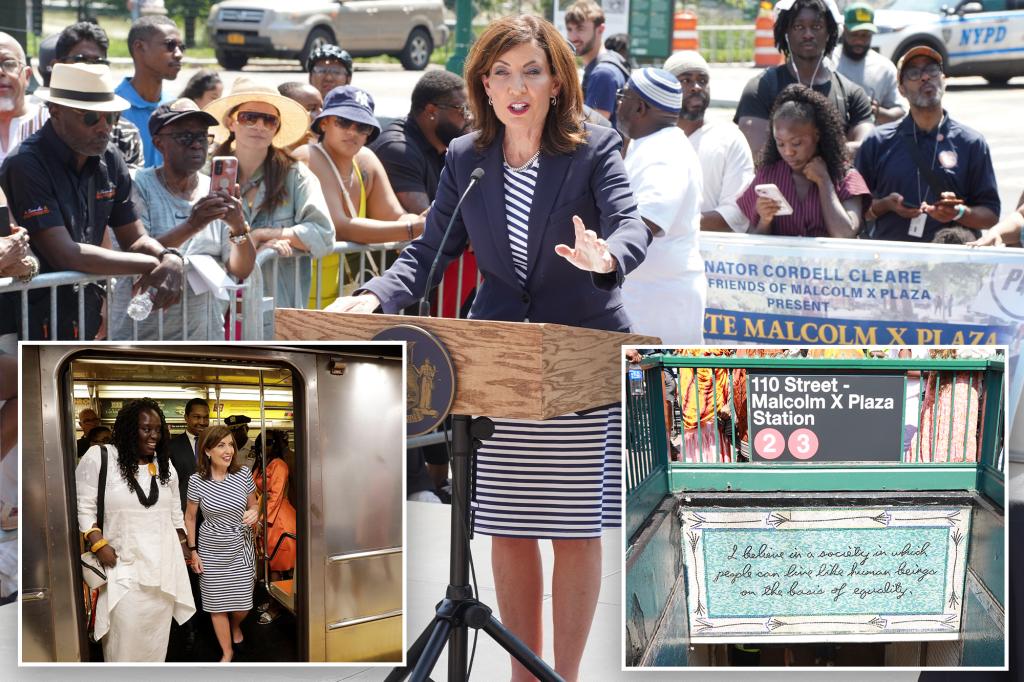New York Gov. Kathy Hochul renamed a Central Park subway station after Malcolm X, the prominent civil rights leader who was a longtime Harlem resident, as part of the city’s Harlem Week celebration.
The legislation penned by Hochul will rename the 110 St-Central Park North subway station to 110 St-Malcolm X Plaza in honor of the slain revolutionary, who lived sporadically in the neighborhood between his late teens and the final decade of his life.
This year’s celebration also marked the 100th anniversary of the Harlem Renaissance, the era following the Great Migration where 175,000 black residents moved to the neighborhood to escape the rampant racism and Jim Crow legislation plaguing the South.
“One of the best ways to celebrate the rich history and community of Harlem is to recognize the contributions of Malcolm X and the Harlem Renaissance to New York and to the world,” Hochul said.
“From the struggle for civil rights and equality to boundary-breaking cultural impacts of American icons like Zora Neale Hurston and Duke Ellington, Harlem has been at the center of progress in our nation for generations.”
Malcolm X, a contested Black Nationalist leader up through his assassination in 1965, sought to strike a balance with Martin Luther King Jr.’s early pacifist approach and the raw violence people of color faced in America.
Early in his civil rights advocacy, Malcolm X, originally born Malcolm Little before abandoning his “slave name,” was a devout follower of Elijah Muhammad, a black separatist and second leader of the Nation of Islam, according to the African American Intellectual History Society.
Malcolm X’s faith shaped much of his work, including his insistence on racial separation and his criticism of King’s nonviolent approach.
But in 1964, Malcolm X suddenly denounced separatism after a fateful pilgrimage to Mecca and falling out with Muhammad, citing a “spiritual rebirth,” as reported by the New York Times at the time.
King and Malcolm X were often perceived as having butted heads because of their opposing approaches, with Malcolm X largely lobbing most of the critiques during his public appearances.
The legends only met once while watching early Senate discussions of the Civil Rights Bill of 1964, mere months before Malcolm X’s death.
Malcolm X’s stances were always malleable, even more so after his pilgrimage, and at the duo’s single meeting, he apparently told King that he would be throwing himself “into the heart of the civil rights struggle,” according to PBS.
“People always talk about this big transformation. But when you look at him, he continually evolved. He continued to research, to learn, and to adopt his new knowledge in his work,” Malcolm X’s daughter, Ilyasah Shabazz, told the Harvard Law Record in 2011.
While Malcolm X was starting to solidify his reshaped approach, he was gunned down by two members of the Nation of Islam while he hosted a meeting for the Organization of Afro-American Unity in Manhattan.
Other parts of Harlem already bear his name, including the Malcolm Shabazz Harlem Market and the Malcolm Shabazz Plaza.
Read the full article here


